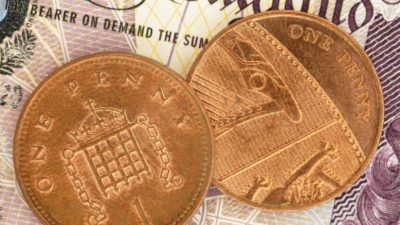 GlaxoSmithKline (LSE: GSK) (NYSE: GSK.US) stock fell when the firm published its results on Wednesday, leaving the pharma giant’s share price down by nearly 5% when markets closed.
GlaxoSmithKline (LSE: GSK) (NYSE: GSK.US) stock fell when the firm published its results on Wednesday, leaving the pharma giant’s share price down by nearly 5% when markets closed.
Although the headline figures weren’t great — core operating profit fell by 14% during the first half of 2014 — I think that yesterday’s reaction was overdone, and believe that yesterday’s results contained several positives for shareholders.
1. Out with the old…
The biggest decline in sales came from the Established Products segment of Glaxo’s portfolio, where sales on a constant currency basis fell by 24% during the second quarter. However, that doesn’t mean these products are without value, and Glaxo is planning to realise £1bn by selling some of them later this year.
At the other end of the lifecycle, the firm reported strong performance from several new respiratory products and from its new HIV product, Tivicay, which already has an 11% market share, and is performing ahead of recently-launched competitor products.
2. Dividend up
Glaxo announced a 6% increase in the second quarter dividend yesterday, but the firm’s usually-strong cash generation has been hit hard by the strength of the pound against other currencies, meaning that free cash flow is down by 70% on the first half of 2013.
As a result, Glaxo has taken the decision to stop buying back shares for the remainder of 2014, which seems a good decision to me: unless a firm’s stock is very cheap, I’d rather free cash flow was used to fund dividends than buybacks, which only benefit sellers (through a higher share price).
3. Vaccine growth
Another bright spot was vaccine sales, which rose by 4%, generating a 32% increase in core operating profits, which rose to £289m.
Although some of this increase was due to favourable timings of sales, and stockpile movements, it’s worth noting that the Vaccines division generated Glaxo’s highest operating margin, at 37%.
Vaccine sales currently account for 20% of profits, but this year’s complex deal with Novartis is designed to strengthen Glaxo’s vaccine business, which the firm believes can generate ‘mid-single digit sales growth’ over the medium to long term.
Is Glaxo a buy?
Overall, I continue to rate Glaxo as a buy.
The firm’s exceptional 27% operating margin means that its forecast P/E of 14.5 looks cheap, in my view, and although currency headwinds are a concern, they should be manageable for Glaxo.






